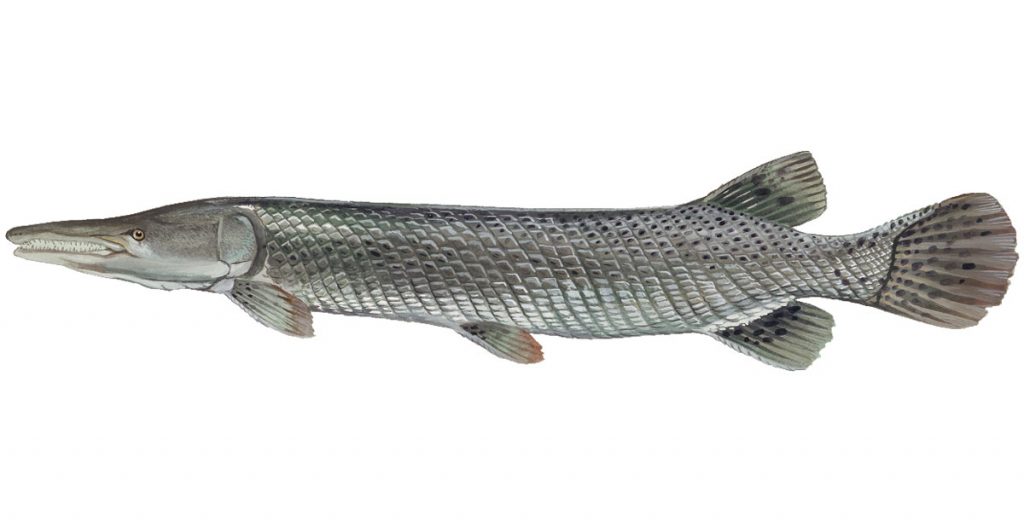Alligator gar

SPECIES INFORMATION
Alligator gar is also known as Atractosteus spatula. They are one of the largest freshwater species found in North America. These fishes are mostly seen in the Southern states of America. At times, they are visible in the Gulf of Mexico. Their common name was obtained from the American alligator, as they look the same. There are four species of gar, of which alligator gar is unique. The others are: Spotted Gar, Shortnose Gar and Longnose Gar.
The alligator gar is bow fished and also fished for business in the Southern American States. The Rio Grande River has a popular gar fishing spot. The gar species are decreasing in number over the years. This is due to loss of habitats and excess fishing. They thrive on slow-moving rivers that have wide flood plains. In many areas, these fishes are now being protected by law. The gar family helps to maintain an ecological balance in the ecosystem.
SIZE
Alligator gar is the largest among the gar family of fishes. Gars are slow in growth, where female gars reach maturity only at age 11. The male gars mature at around age 6. The male alligator gars live up to 26 years of age and females live till 50 years. As per wildlife officials, the life span of these fishes varies from 50-70 years of age. Alligator gars normally grow up to about 2 m and weight over 45 kg. Reports suggest they can grow up to 159 kg and about 10 ft lengthwise. The largest alligator gar caught was from St. Francis River in Arkansas during the 1930s. It weighed around 159 kg.
RANGE
Alligator gars are seen in the coastal plains of the Gulf of Mexico. They are present from the Econfina River, Florida all the way to Veracruz in Mexico in the south. They extend from the Mississippi River in the north to the lower parts of the Ohio and Missouri rivers. An isolated population is seen in the waters of Nicaragua. The gar species have reduced in number due to over fishing. Reports of sightings are available only once in a few years now. Hence, protection laws are in place in many states to preserve the species.
HABITAT
Alligator gars can adapt well to the high saline waters. They are seen in the lakes, slow-moving waters, bays, brackish marshes and swamps. The young ones are seen among the leaves and twigs at the surface level. They live in large rivers having huge floodplains. These rivers are reducing in number due to human exploitation. The alligator gars are aqua farmed in pools and ponds for various reasons. Mitigation stocking, research in universities and consumption are some of the purposes.
DIET
Alligator gars seem inactive, but they are great ambush predators. They are night predators and primarily piscivores. They remain still in the waters and consume fishes and water fowl floating on the surface. Many times they remain still like a log on the water for hours. Their diet mainly consists of fishes. The gars found on brackish waters feed well on blue crabs and hardhead catfish. They also eat water fowl, turtles, carrion and small mammals. The gars even attack ducks and eat the injured fowl shot down by hunters.
